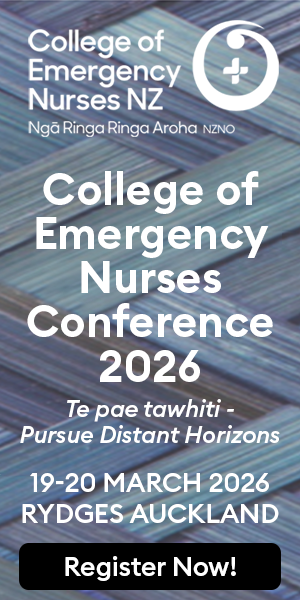Instead, RNs need only provide evidence to broadly reflect six standards or “pou”, and enrolled nurses (ENs) five, its revised proposal shows.
Consultation on the latest proposal closes on August 2. Details on making a submission can be found here.
Accompanying the pou, are 31 new “descriptors” for RNs and 28 for ENs with more detailed guidance on what is required. (The “descriptors” replace the former “competencies” — which had replaced the earlier “indicators”.)
The council is also changing the wording from “competencies” to “standards of nursing competence”.
‘Differential diagnosis has become a key element of nursing practice that incorporates history taking, comprehensive nursing assessment, and clinical reasoning skills.’
Other changes see more emphasis on nurses’ abilities to make clinical decisions and differential (preliminary) diagnoses, culturally competent practice, digital health skills and that global nursing practices and sustainability be considered in their nursing practice.
“Differential diagnosis has become a key element of nursing practice that incorporates history taking, comprehensive nursing assessment, and clinical reasoning skills,” the latest proposal states.
The revised standards will also cover RNs across a range of practice settings, not just hospitals.
The review of both RN and EN competency standards was intended to ensure all nurses were competent to practise in a culturally safe and ethical matter, the Nursing Council has said.
Nursing Council chief executive Catherine Byrne has said the council wanted to see te Tiriti o Waitangi and health equity for Māori at the centre of nursing practice, and support a more collaborative relationship between enrolled and registered nurses.
Initial proposal created waves
But the council’s initial change proposal in December saw required RN competencies leap from 20 to 41 — prompting 2225 nurses and 54 organisations to respond. Many were worried about the “huge amount of work” that would mean for nurses achieving continuing professional competence requirements such as workplace PDRPs (professional development and recognition programmes) every three years or so.
However, the council’s general move towards a more te Tiriti-led, culturally competent workforce has been warmly welcomed.
“Nursing will be leading the way in health care towards equity and inclusion at a time when the Government is attempting to dismantle the rights of tangata whenua,” one nurse said in NZNO’s submission at the time.
EN and RN roles
EN competencies were reviewed to align with a new scope of practice which no longer requires them to work “under delegation” of RNs. Instead they can “seek guidance” when appropriate.
The proposed new EN standards of competency “recognise that the EN works in partnership and collaboration with individuals, their whānau, communities, and the wider health-care team that may include a leadership or coordination role”, the current proposal states.
NZNO — Tōpūtanga Tapuhi Kaitiaki o Aotearoa and Te Poari o Te Rūnanga o Aotearoa have both been part of the design group, along with a range of nursing leaders including Māori and Pacific.
NZNO suggested in its February submission — which drew on member feedback — that the competencies be aligned along five or six pou, rather than dozens of technical requirements.
Key changes are:
- reframing the language from “competencies” to “standards of nursing competence”
- requiring evidence for continuing competence requirements against each standard
- retaining the pou as core nursing standards (describing what is required to practise safely) and providing descriptors for each pou which give depth and context to each standard to guide quality practice across all settings
- aligning pou one (te Tiriti) and two (cultural safety) across the EN and RN standards of competence
- removing duplication with more concise descriptors and greater emphasis on the pou.
Click to view the latest proposed competency requirements, including 31 “descriptors”, for registered nurses and 28 for enrolled nurses.
| Pou | Registered nurses | Enrolled nurses |
|---|---|---|
| One | Te Tiriti o Waitangi Giving effect to Te Tiriti o Waitangi in nursing practice requires registered nurses to support the right of Māori to exercise self-determination for health and wellbeing. Registered nurses understand and recognise the status of tangata whenua in Aotearoa New Zealand, which includes the importance of kawa whakaruruhau. They work with individuals and whānau to achieve equitable healthcare outcomes. |
Te Tiriti o Waitangi Giving effect to Te Tiriti o Waitangi in nursing practice requires enrolled nurses to support the right of Māori to exercise self-determination for health and wellbeing. Enrolled nurses understand and recognise the status of tangata whenua in Aotearoa New Zealand, which includes the importance of kawa whakaruruhau. They work with individuals and whānau to achieve equitable healthcare outcomes. |
| Two | Cultural safety Cultural safety in nursing practice ensures registered nurses provide culturally safe care to all people. This requires nurses to understand their own cultural identity, and its impact on professional practice, including the potential for a power imbalance between the nurse and the recipient of care. |
Cultural safety Cultural safety in nursing practice ensures enrolled nurses provide culturally safe care to all people. This requires nurses to understand their own cultural identity, and its impact on professional practice, including the potential for a power imbalance between the nurse and the recipient of care. |
| Three | Whanaungatanga and communication Whanaungatanga underpins communication in nursing practice that requires registered nurses to establish relationships and connections through the use of effective communication strategies with individuals, whānau, and the interprofessional healthcare team. |
Knowledge informed practice Knowledge informed practice requires enrolled nurses to apply knowledge and clinical expertise to enable assessment, clinical decision-making, and provision of safe quality nursing practice for individuals, whānau and communities. They integrate clinical and cultural expertise, recognising people’s unique values and circumstances to improve health outcomes. |
| Four | Pūkengatanga and evidence-informed nursing practice Pūkengatanga and evidence informed nursing practice requires registered nurses to apply critical thinking, and scientific and nursing knowledge to inform the provision of quality nursing practice. Registered nurses use scientific and cultural knowledge to inform clinical decision making and the provision of care. |
Professional accountability and responsibility Professional accountability and responsibility in nursing practice requires enrolled nurses to provide nursing care within professional, ethical and legal boundaries, that promote safe quality nursing practice by ensuring the rights, confidentiality, dignity and respect for people are upheld. |
| Five | Manaakitanga and people centredness Manaakitanga and people centredness in nursing practice requires registered nurses to work compassionately, collaboratively, and in partnership to build trust and shared understanding that enables decision making and incorporates the views of people and whānau. |
Partnership and collaboration Partnership and collaboration within the context of nursing practice requires enrolled nurses to work with individuals, their whānau, communities, and the interprofessional health care team across the life span in all settings. |
| Six | Rangatiratanga and leadership Rangatiratanga in nursing practice requires all nurses to lead and act as change agents. Rangatiratanga is exercised when nurses act as independent thinkers, intervene, speak out, advocate, and follow processes to escalate concerns. Rangatiratanga is further demonstrated when nurses proactively offer leadership support to others, providing solutions and leading innovative change for improvement. |
- The number of “descriptors” for both RNs and ENs was clarified in this article post-publication.




